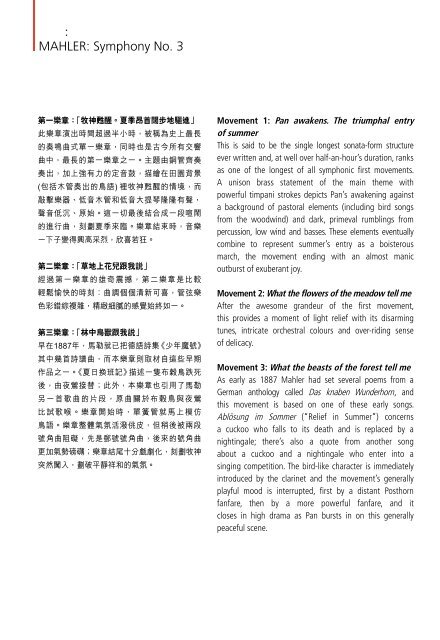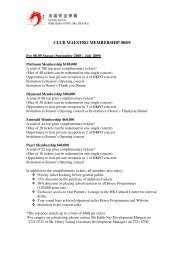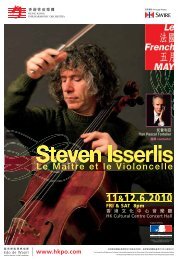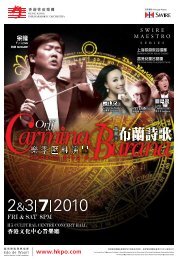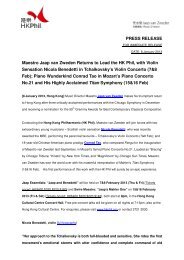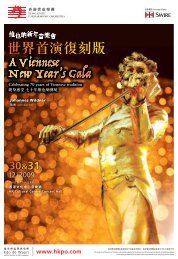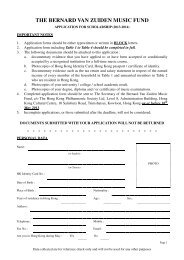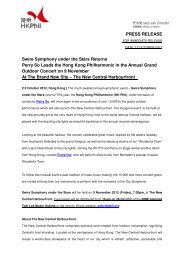10&11 - Hong Kong Philharmonic Orchestra
10&11 - Hong Kong Philharmonic Orchestra
10&11 - Hong Kong Philharmonic Orchestra
You also want an ePaper? Increase the reach of your titles
YUMPU automatically turns print PDFs into web optimized ePapers that Google loves.
MAHLER: Symphony No. 3<br />
<br />
<br />
<br />
<br />
<br />
<br />
<br />
<br />
<br />
<br />
<br />
<br />
<br />
<br />
<br />
<br />
<br />
<br />
<br />
<br />
<br />
<br />
<br />
<br />
<br />
Movement 1: Pan awakens. The triumphal entry<br />
of summer<br />
This is said to be the single longest sonata-form structure<br />
ever written and, at well over half-an-hour’s duration, ranks<br />
as one of the longest of all symphonic first movements.<br />
A unison brass statement of the main theme with<br />
powerful timpani strokes depicts Pan’s awakening against<br />
a background of pastoral elements (including bird songs<br />
from the woodwind) and dark, primeval rumblings from<br />
percussion, low wind and basses. These elements eventually<br />
combine to represent summer’s entry as a boisterous<br />
march, the movement ending with an almost manic<br />
outburst of exuberant joy.<br />
Movement 2: What the flowers of the meadow tell me<br />
After the awesome grandeur of the first movement,<br />
this provides a moment of light relief with its disarming<br />
tunes, intricate orchestral colours and over-riding sense<br />
of delicacy.<br />
Movement 3: What the beasts of the forest tell me<br />
As early as 1887 Mahler had set several poems from a<br />
German anthology called Das knaben Wunderhorn, and<br />
this movement is based on one of these early songs.<br />
Ablösung im Sommer (“Relief in Summer”) concerns<br />
a cuckoo who falls to its death and is replaced by a<br />
nightingale; there’s also a quote from another song<br />
about a cuckoo and a nightingale who enter into a<br />
singing competition. The bird-like character is immediately<br />
introduced by the clarinet and the movement’s generally<br />
playful mood is interrupted, first by a distant Posthorn<br />
fanfare, then by a more powerful fanfare, and it<br />
closes in high drama as Pan bursts in on this generally<br />
peaceful scene.


